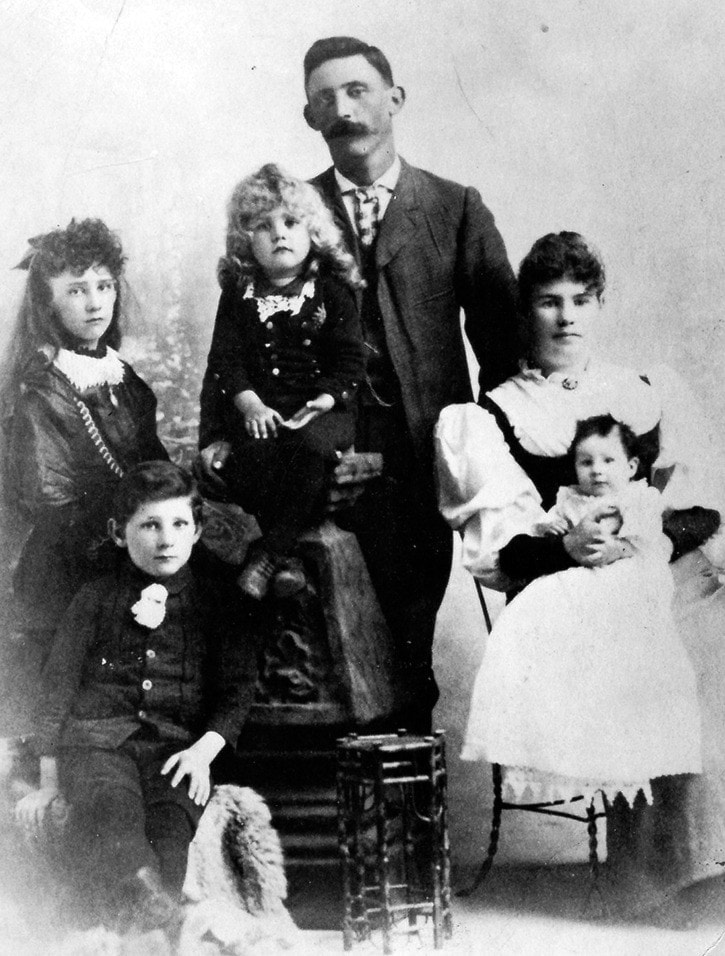It’s only a block long, but the Sheilds name packs a wallop of history. Thankfully, Sooke council agreed recently to correct the street sign for the street connecting Eustace and West Coast Road, which had the family’s name spelled incorrectly.
This 1894 photo shows Captain Ed Sheilds, one of the sons of James Sheilds who took up Crown land far up the Sooke River late in the 1880s.
Of British origin, James Sheilds had reached Sooke by way of the California gold rush and a stopover in Victoria. His son Ed became a ship’s master and regularly took schooners out to the Bering Sea in the seal hunt. Along with Oscar Scarf and the Poirier brothers, he sailed on the Agnes McDonald.
Ed Sheilds is posed with his wife Louise Charters, who was a daughter in the William Bell Charters family, the settlers who had taken up the land on the west side of the Sooke River mouth in 1865. This photo was taken just before Captain Ed sailing on the ill-fated schooner May Belle in 1896, one of the many ships in the sealing industry that never returned.
Though there was no network of social services in those days, the four children pictured did well. Ethel, left, lived quietly; next is Ed Jr who married Esther Peatt (think Peat Road in Colwood); the baby at right is Mary Anne who married Albert Eales.
In the 1970s when I was researching pioneer families, I met Mary Anne Eales, who had become a farmer. She fascinated me with her tales of farming at Ragley in East Sooke, and of hunting cougars and wolves.
The most famous of the children though was Lyall, the curly-tressed velvet and lace-attired child perched by his father’s arm. It was Lyall Sheilds who grew up to serve overseas in the First World War, helped initiate the Royal Canadian Legion in Sooke, and for many years operated a blacksmith shop on Belvista.
It was Lyall Sheilds that designed the tricycle that was hand-pedaled along the 27 miles of concrete flowline so the guard could inspect for leaks in the system that carried water from Sooke Lake to Victoria for almost 100 years.
A big supporter of Sooke Community Association, Lyall was the first to barbecue the spring salmon in the traditional First Nations Style for All Sooke Day in 1934, and his legacy is also seen in the wrought iron hinges on the entrance door of Sooke Community hall.
Sadly, it was only a few years later, in 1941, that Lyall Sheilds’ vehicle was struck by a CNR steam train at the Woodlands Road level crossing. Besides the block long Sheilds Road, the family name is recognized by the many hikers that enjoy the trails up in the Sooke hills that lead to beautiful Sheilds Lake in the wilderness.
•••
Elida Peers is the historian of Sooke Region Museum.
